Sessions and Chairs
SPECIAL ADDED SESSION
COVID-19 Pandemic Session:
Transmission, Protection, Treatment, and Public Health Experiences Learned During COVID-19 Pandemic
Abstract Submission Deadline: Sept. 18, 2020
Coronaviruses (CoVs) belong to the zoonotic Coronaviridae family, which cause acute respiratory diseases. The world has seen extremely virulent strains of these viruses during the Severe Acute Respiratory Syndrome (SARS) outbreak of 2002, Middle East Respiratory Syndrome (MERS) outbreak of 2012, and during the current novel coronavirus disease (COVID-19) outbreak. COVID-19 is caused by SARS-CoV-2, an extremely virulent strain of coronavirus with an R0 of >2.0, are having a profound public health impact across the globe with more than 450,000 cases and 20,000 deaths, to-date. Like most viruses, CoVs are nano-scale (100-200 nm in diameter) self-assembled proteins. Their spread and transmission pathways are also controlled by nano-scale transport processes (e.g., diffusion, attachment onto stable water droplets, etc.). Finally, inactivation of these viruses has to rely on interaction with the surface features (e.g., lipid bilayer membrane and the membrane proteins). Their detection, capture, and inactivation thus are heavily dependent on such interfacial interaction at the nano-scale.
We welcome technical abstracts that include but are not limited to transmission potential of viruses, viability and transport of CoVs on aerosolized droplets, nano-scale interaction of CoVs with synthetic nanomaterials, fate and transport of enveloped viruses including CoVs, viability of CoVs on surfaces, efficacy of personal protection equipment to protect from aerosolized CoVs, attachment, computational and experimental studies that reveal nano-scale features of CoV virions, nano-scale pharmaceutical approaches for COVID-19 mitigation, nano-enabled non-pharmaceutical approaches for COVID mitigation, and sensors to detect CoVs. The session will be held in the 9th Nano Conference, jointly organized by the Sustainable Nanotechnology Organization (SNO) and the Nanotechnology, Occupational and Environmental Health (NanOEH) Committee, to create synergies between the audience representing these organizations.
Smart Nanosensors for Rapid Screening of Emerging Viral Pathogens

Wunmi Sadik, NJIT
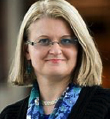
Silvana Andreescu
Clarkson University
The Coronavirus SARS-CoV-2 has reached a pandemic status, and no drug or vaccine is currently available. As of June 2020, there had been 6,513,301 confirmed cases, 386,091 deaths, and 2,808,183 recoveries globally. While the global scientific community is on a race to develop new vaccines against this novel virus or identify anti-viral treatments from readily available medications, the immediate need is to develop reliable testing methods. This session will focus on the development of nanostructured biosensors and reliable analytical methods to detect SAR-CoV-2 and other emerging pathogens. Areas to be addressed include novel nanosensor materials, PCR and metagenomic methods, role of nanotechnology in COVID-19 testing and assessment, and novel electrical or optical properties of the viruses. Others include the molecular recognition and the application of nano and advanced sensors in the creation of new and or improved detection methods.
Green/advanced synthetic materials and manufacturing

Chuck Geraci, NIOSH

Candace Tsai
Colorado State Univ.
This session will focus on various aspects of safe, responsible, and sustainable development and deployment of nano and advanced materials. Areas to be addressed include the research needed to develop safer and more sustainable advanced materials; methods to manufacture those materials; and the application of nano and advanced materials in the creation of new and or improved commercial and consumer products. Principles of Green Chemistry, Safer-by-Design, and Sustainability that can be applied to the full life cycle of an advanced material will be explored.
Education

Deb Newberry,
Newberry
Technology
Associates
SNO Conference educational session focuses on diverse nanotechnology education programs and courses. This focus on this focus and welcomed content includes innovative or multi-disciplinary content, research, outreach experiences and experiments for students and educators. Content can include applications for many grade levels form. Information can be applicable to multiple grade levels from high school lever to graduate level. We would love to hear about what you are doing to let folks know about and understand nanotechnology.
Epidemiology
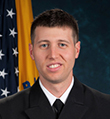
Matt Dahm, NIOSH
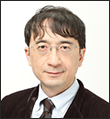
Gaku Ichihara,
University of Tokyo
As nanotechnology and nanomaterial science are emerging and still on the way of development, there is a limited number of complete epidemiological studies on the potential hazards of nanomaterials or nanotechnology. Although epidemiological studies might have limitations as observational studies, any information on an association between exposure to engineered nanomaterials and the health status is very informative and useful. In this epidemiology session, studies on the association between exposure to conventional particles or fibers and the health status of the human population will be discussed, as such studies suggest how scientists should observe the potential outcomes from exposure to engineered nanomaterials. In addition, presentations on how to establish medical surveillance on potential effects of manufactured nanomaterials are highly encouraged.
Fate & Transport

Frank Van
Der Kammer
The session encourages abstracts on new research to better understand and predict the fate and transport of nanomaterials and their biological interactions in natural environments as well as engineering and biomedical applications. Topics covered will extend from fundamental nanoscale investigations of nanoparticle transformations and cellular interactions, to broad system-level analyses of nanomaterial fate, transport and exposure. Innovative approaches to address these topics through laboratory experiments, field studies, and modeling are all encouraged.
Global Challenge

Alba Graciela
Avila Bernal

Ulla Birgitte Vogel
Gobal challenge session aims to awake the attention of stake holders, industry and academic community regarding the collaborative programs that map and monitor the hazard of nanomaterials used an release from nanotechnology activities and products, Initiatives for creating protective exposure standards in research and industrial activities, the insertion of development of precautionary principles and the revision of health based exposure limits, in addition to the use of Artificial intelligence algorithms for supporting decision making and sustainability.
Nanomedicine, Pharmaceutical and Medical Applications, Nanosafety

Jared M. Brown
University of Colorado
Anschutz Medical Campus
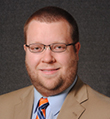
Jonathan H. Shannahan
Purdue University
This session will discuss development of nanomedicines and their pharmaceutical and medical applications with a focus on safe implementation of these materials into the clinic. Areas to be addressed include the research needed to develop safer nanomedicines; methods to assess safety of nanomaterials used in pharmaceutical and medical applications; clinical and pre-clinical assessments of nanomedicine efficacy and safety.
Nanotoxicology and Human Health Risk Assessment

Alison Elder,
University of Rochester
Anschutz Medical Campus

Jenny Roberts, CDC/NIOSH
Our understanding of how engineered nanomaterials encountered in consumer products, the workplace, and the environment might impact human health has grown considerably over the last decade. The looming challenge in this field is addressing the complexity of exposure from the point of manufacture through disposal and developing strategies to incorporate information from many diverse sources. This session will focus on the latest advances in the nanomaterials risk assessment process and will include topics such as incorporation of adverse outcome pathway analyses, the use of in vitro findings, biomarker discovery, and the use of machine learning to support hazard evaluation.
Occupational and Environmental Exposure Assessment

Michael Riediker

Jürgen Brune
Exposure to nanomaterials and their aggregates and agglomerates can occur at the workplace and the general environment. During this session, we invite talks that provide a good characterisation of the exposure to nanomaterials and encourage the reporting of meta-data helpful for life-cycle and risk-analysis and -management such as sources and release types; information on activities, processes, and protective efforts; and the strategy for choosing exposure metrics.
Risk Governance of Nanomaterials and Advanced Materials: Theory to Application

Sally Tinkle,
Science and Technology
Policy Institute

Lynn L. Bergeson,
Bergeson & Campbell, P.C.
The session chairs welcome abstracts on:
- assumptions underlying the risk governance concept and their implications for nanotechnology risk governance
- frameworks for risk governance and approaches to operationalize them, including gaps and barriers to implementation
- physical and biological data needs for evidence-based decision making
- identification of stakeholder communities and approaches for meaningful stakeholder participation in risk governance
- experiences with nanomaterials and nano-enabled product innovation with regards to safety issues and/or regulation
- policy and regulatory gaps and barriers to nanomaterials and advanced materials R&D and commercialization
Sustainability and Energy

Barbara Karn,
SNO
This session will focus on various aspects of safe, responsible, and sustainable development and deployment of nano and advanced materials. Areas to be addressed include the research needed to develop safer and more sustainable advanced materials; methods to manufacture those materials; and the application of nano and advanced materials in the creation of new and or improved commercial and consumer products. Principles of Green Chemistry, Safer-by-Design, and Sustainability that can be applied to the full life cycle of an advanced material will be explored.
Sustainable Food and Agriculture

Gregory V. Lowry,
Carnegie Mellon
University
There is a globally recognized need for solutions to sustainably advance the future of food and agriculture systems. Novel applications of nanomaterials are being developed and propose substantial benefits through their use in applications across the agriculture system. Our symposium will highlight the recent advances in this emerging area of sustainable nanotechnology research. We specifically invite abstracts on the topics related to applications (e.g., precision agriculture input, disease detection and intervention, food quality and safety improvement, etc.), assessment of potential implications (we are particularly interested in studies that advance our mechanistic understanding of nanomaterial plant interactions), lab- and field-scale studies, and systems-level sustainability assessment.
Sustainable water treatment and remediation
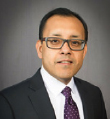
Navid Saleh,
UTexas Austin
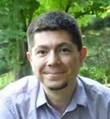
Onur Apul
University of Maine
We welcome technical abstracts that include but are not limited to emerging issues on detection and removal of emerging contaminants (e.g., endocrine disrupting compounds, PFAS, illicit drugs, cannabinoids, microplastics, etc.), disinfection byproducts (DBPs), and emerging viruses and bacteria (e.g., Legionella pneumophila). We also welcome materials studies and studies on fundamental nano-scale interaction, nano-bio interaction, effective integration of nanomaterials into treatment devices, autonomous sensors and contaminant targeting agents, biomimetic materials for treatment, treatment solutions at the nexus of food-energy-water, etc. Studies that aim to harness nano-specific optical, electronic, reactive, and adsorptive properties are of particular interest to this session.
Poster session Chair

Illya A. Medina-Velo,
Western New Mexico University